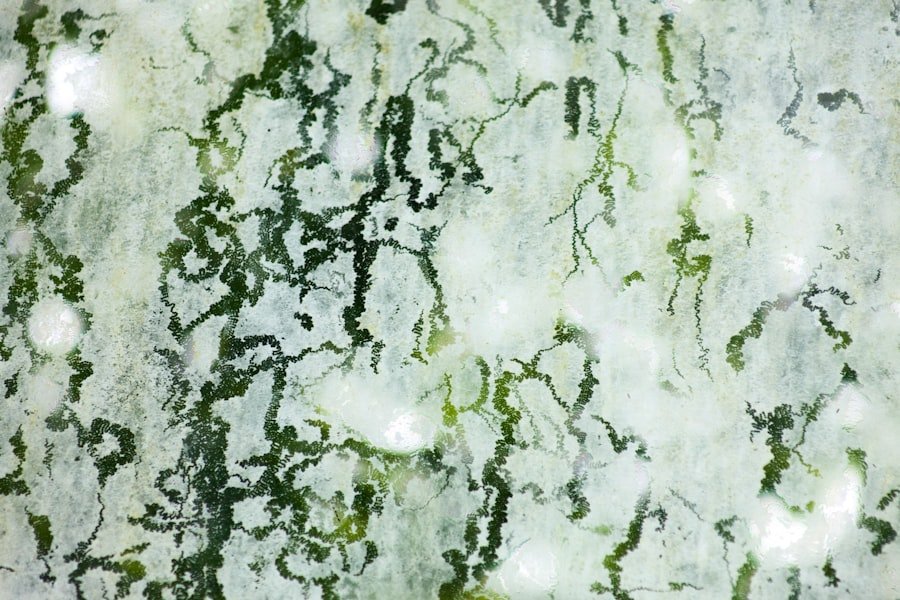Mold growth on books is a common issue that affects libraries, book collectors, and anyone who values their book collection. Mold is a type of fungus that thrives in damp and humid environments, making books an ideal breeding ground. The presence of mold not only damages the books themselves but also poses health risks to individuals who come into contact with them.
Addressing mold growth on books is of utmost importance for several reasons. Firstly, mold can cause irreversible damage to books, leading to deterioration and loss of valuable information. Mold can eat away at the paper, bindings, and covers of books, rendering them unreadable and unsalvageable. Secondly, exposure to mold spores can have adverse health effects on individuals, especially those with allergies or respiratory issues. Mold spores can trigger allergic reactions, respiratory problems, and even infections in some cases. Therefore, it is crucial to understand the causes of mold growth on books and take proactive measures to prevent it.
Key Takeaways
- Mold growth on books is a common problem that can cause serious damage to the books and pose health risks to humans.
- The main causes of mold growth on books are high humidity, poor ventilation, and exposure to water or moisture.
- Signs of mold growth on books include visible mold, musty odor, discoloration, and warping of pages.
- Health risks associated with moldy books include respiratory problems, allergies, and infections.
- Prevention methods for mold growth on books include controlling humidity, improving ventilation, and avoiding exposure to water or moisture.
Understanding the causes of mold growth on books
Several environmental factors contribute to mold growth on books. The most significant factor is high humidity levels. Mold thrives in environments with a relative humidity above 60%. Libraries and book collections are often susceptible to high humidity due to poor ventilation or inadequate climate control systems. Additionally, water leaks or flooding can introduce moisture into the environment, creating an ideal breeding ground for mold.
Common sources of moisture in libraries and book collections include leaking roofs or pipes, condensation from air conditioning units, and high humidity levels in basements or storage areas. These sources of moisture can go unnoticed for extended periods, allowing mold to grow undetected until it becomes a significant problem.
Signs of mold growth on books
There are several visual indicators that can help identify mold growth on books. The most obvious sign is the presence of fuzzy or discolored patches on the covers, pages, or bindings of books. These patches can range in color from white or gray to green or black, depending on the type of mold present. Mold can also cause the pages to become warped or distorted.
Another sign of mold growth is the musty odor associated with moldy books. If you notice a strong, unpleasant smell when handling a book, it is likely that mold is present. This odor is caused by the volatile organic compounds (VOCs) released by mold as it grows and spreads.
Health risks associated with moldy books
Exposure to mold spores can pose significant health risks, especially for individuals with allergies or respiratory issues. Mold spores are tiny particles that are released into the air when mold is disturbed. When inhaled, these spores can trigger allergic reactions such as sneezing, coughing, and watery eyes. In some cases, exposure to mold spores can also lead to more severe respiratory problems, including asthma attacks or infections.
Individuals with pre-existing respiratory conditions such as asthma or chronic obstructive pulmonary disease (COPD) are particularly vulnerable to the health risks associated with moldy books. Mold spores can exacerbate their symptoms and make it more difficult for them to breathe. Therefore, it is essential to take immediate action if you suspect mold growth on your books to protect your health and the health of others.
Prevention methods for mold growth on books
Preventing mold growth on books requires a combination of strategies to control humidity levels and ensure proper ventilation and air circulation. Firstly, it is crucial to monitor and maintain appropriate humidity levels in libraries and book storage areas. Ideally, the relative humidity should be kept below 50% to inhibit mold growth. This can be achieved through the use of dehumidifiers or HVAC systems with humidity control capabilities.
Proper ventilation is also essential in preventing mold growth. Ensuring that there is adequate airflow in libraries and book storage areas helps to prevent the buildup of moisture and stagnant air. This can be achieved by using fans, opening windows, or installing ventilation systems.
Cleaning and restoration techniques for moldy books

If you discover mold growth on your books, it is important to take immediate action to prevent further damage and protect your health. However, it is crucial to approach the cleaning and restoration process with caution to avoid causing additional harm to the books.
Safe and effective methods for removing mold from books include gently brushing off the mold with a soft brush or cloth, using a HEPA vacuum cleaner to remove loose spores, and wiping the affected areas with a solution of hydrogen peroxide or vinegar. It is important to wear protective gloves and a mask while cleaning moldy books to minimize exposure to mold spores.
For valuable or rare books, it is recommended to seek professional restoration services. Professional restorers have the expertise and specialized equipment to safely remove mold and restore books to their original condition. They can also provide advice on how to prevent future mold growth and preserve the longevity of your book collection.
How to store books to prevent mold growth
Proper storage of books is crucial in preventing mold growth. Here are some best practices for storing books in a mold-free environment:
1. Choose a dry and well-ventilated area: Avoid storing books in damp or humid areas such as basements or attics. Instead, opt for a dry room with good air circulation.
2. Use bookshelves with proper spacing: Ensure that there is enough space between books on the shelves to allow for proper air circulation. Avoid overcrowding the shelves, as this can trap moisture and promote mold growth.
3. Keep books away from walls: Leave a gap between the back of the bookshelf and the wall to allow for air circulation and prevent condensation.
4. Avoid direct sunlight: Exposure to direct sunlight can cause books to fade and deteriorate. Store books away from windows or use UV-filtering window coverings.
5. Monitor temperature and humidity levels: Use a hygrometer to monitor the temperature and humidity levels in the storage area. Aim for a relative humidity of 30-50% and a temperature between 60-70 degrees Fahrenheit.
Common misconceptions about mold growth on books
There are several common misconceptions about mold growth on books that need to be debunked to ensure accurate information for preventing mold growth. One common misconception is that freezing books can kill mold. While freezing can temporarily halt the growth of mold, it does not kill the spores. Once the books thaw, the mold can continue to grow and spread.
Another misconception is that sunlight can kill mold on books. While exposure to sunlight can help dry out damp books and inhibit mold growth, it does not kill the spores. Additionally, prolonged exposure to sunlight can cause books to fade and deteriorate.
It is important to rely on accurate information and consult professionals when dealing with mold growth on books to ensure effective prevention and restoration methods.
Professional services for mold remediation on books
In cases where mold growth is extensive or valuable books are affected, it is highly recommended to seek professional services for mold remediation. Mold remediation professionals have the expertise, experience, and specialized equipment to safely remove mold from books and prevent further damage.
Professional services for mold remediation on books typically include an assessment of the extent of the mold damage, removal of mold using safe and effective techniques, restoration of affected books, and recommendations for preventing future mold growth.
Hiring a professional for mold removal and prevention ensures that the job is done correctly and minimizes the risk of further damage to your book collection. It also provides peace of mind knowing that your valuable or rare books are in the hands of experts who understand the intricacies of book restoration.
Conclusion and final thoughts on mold growth on books
In conclusion, mold growth on books is a significant problem that needs to be addressed for preservation and health reasons. Mold can cause irreversible damage to books and pose health risks to individuals who come into contact with them. Understanding the causes of mold growth, recognizing the signs of mold on books, and taking proactive measures to prevent it are crucial for preserving book collections and protecting our health.
By controlling humidity levels, ensuring proper ventilation and air circulation, and following best practices for storing books, we can minimize the risk of mold growth. In cases where mold growth is extensive or valuable books are affected, it is advisable to seek professional services for mold remediation.
Book collectors, librarians, and anyone who values their book collection should take proactive measures against mold growth to ensure the longevity of their books and maintain a healthy environment. By addressing the problem of mold growth on books, we can preserve our literary treasures and protect ourselves from the health risks associated with mold exposure.


